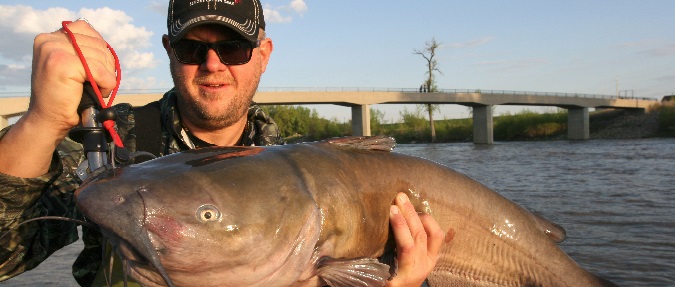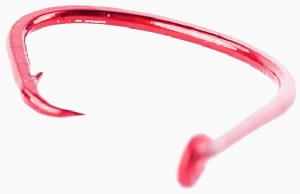It’s remarkable to consider that some of the earliest fishing artifacts unearthed by archaeologists were those curious contraptions we call circle hooks. Equally intriguing, this singular hook was designed and fished by numerous unrelated ancient civilizations across the globe. For pre-Columbian natives of Latin America, ancient Polynesians, early Japanese, and indigenous people of the North Pacific, the circle hook was apparently a logical invention among fishermen. 
But how is it that such different cultures arrived independently at a similar, yet singularly innovative hook style? The answer, in part, lies with the fact that these early fishermen were not sport anglers in today’s sense. Rather, they were hunters and trappers of fish. As subsistence fishermen, they needed a tool that hooked fish by itself. Circle hooks did exactly that, serving as efficient “fish traps” and putting dinner on the table for hundreds of generations of early anglers.
In more recent times, commercial fishermen as well as catfishers using trotlines, juglines, and limblines have relied almost exclusively on the self-setting power of a circle hook. The true fish-catching talents of a circle hook, however, emerge only when coupled with a well-balanced, finely designed catfish rod.
Setting the Trap
Among rod and reel catfish anglers today, circle hooks have become standard fish-catching equipment. Yet without proper use of complementary tools—the right rod, line and bait—the circle hook is no more useful than a mousetrap lacking a spring.
Studying the hook itself, most rod and reel anglers believe that modified circle designs— those with points that turn toward the shank at roughly 45-degrees— hook cats a bit easier than true circles, whose points turn at about 90-degrees. True circles, such as Eagle Claw’s heavy stainless steel 190, remain the preference of saltwater fishermen. 
Modified designs, such as Rippin Lips Tournament Grade Circle, typically sport wider gaps than true circles, a feature that plays a vital role in hooking bony-lipped catfish. In truth, hook size itself remains far less important than gap and bite – the areas between point and shank, point and bend, respectively. When attaching baits, it’s wise to leave most of the throat open in order to allow the hook to properly pivot in the fish’s jaw and drive itself home. Impale cutbaits as lightly as possible. With live baitfish, plant the hook gently through the nostrils, lips or just beneath the skin near the tail. Certainly, avoid burying the hookpoint in the bait. Finally, sharpen the point and file down the barb to a nub; you’ll hook and land more cats, and more easily extract the hook. Note, a circle hook’s design keeps catfish hooked securely during battle, even lacking a large barb.
In order for the hook to lodge itself into the corner of a cat’s soft, yet bony jowl, steady, sustained pressure must be exerted opposite the direction of a striking fish. Veteran catfish guide Captain Brad Durick, a highly instinctive angler who regularly employs circle hooks to put his clients on big cats, describes the process: “A good circle hook ‘trap’ consists of a 7 to 10-foot rod that loads up slowly, allowing a cat to grab the bait, turn, and move away with slight, steady resistance.” During the past season, Durick has literally boated over 10 tons of big channel catfish with a single set of SuperCat rods. For big channel cats, he prefers the 7-foot 6-inch medium-action casting version of the popular Rippin Lips sticks. Durick also notes that his SuperCats’ S-Glass blanks offer the perfect balance between light heft (weight), sensitivity (strike detection) and tip softness.
“Monofilament line complements the hook and rod perfectly,” he adds, “Its stretch yields a sort of bungee-cord effect. Lines like 30-pound test Ande Premium cushion the hookset just enough to prevent the hook from bouncing out of the fish’s jaw. Happens sometimes with no-stretch braid.” Durick continues, “Lots of folks want to loosen their drags, too, but a tight drag is better—helps turn and lock the hook into the cat’s jaw.”
“Keeping the rod in a rod holder seals the deal,” he says. “Only thing hand-holding the rod does is tempt you to set the hook, which is usually a no-no. I like to set the holders to position rods at about 55-degrees to the water. This helps load the rod slowly when a fish takes the bait. When the rod tip bounces, signaling a chewing cat, I don’t touch it until the rod folds over completely. Lift the rod straight up out of the rod holder, and reel down while slowly forming a deep arc in the rod.”
Employing the aforementioned prescriptions, Durick says he hooks over 99-percent of biting catfish in the corner of the lip, with almost zero fish hooked in the throat. That’s one impressive box score—both from a fishing perspective, and from a conservation point of view. It means every big cat Durick catches is shortly swimming again, where it can thump someone else’s rod.
So goes the circle of a catfish’s life. //
